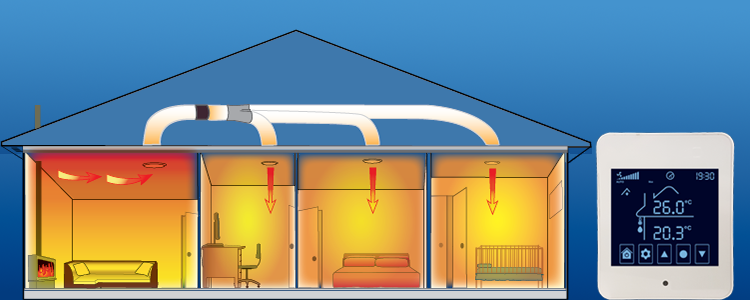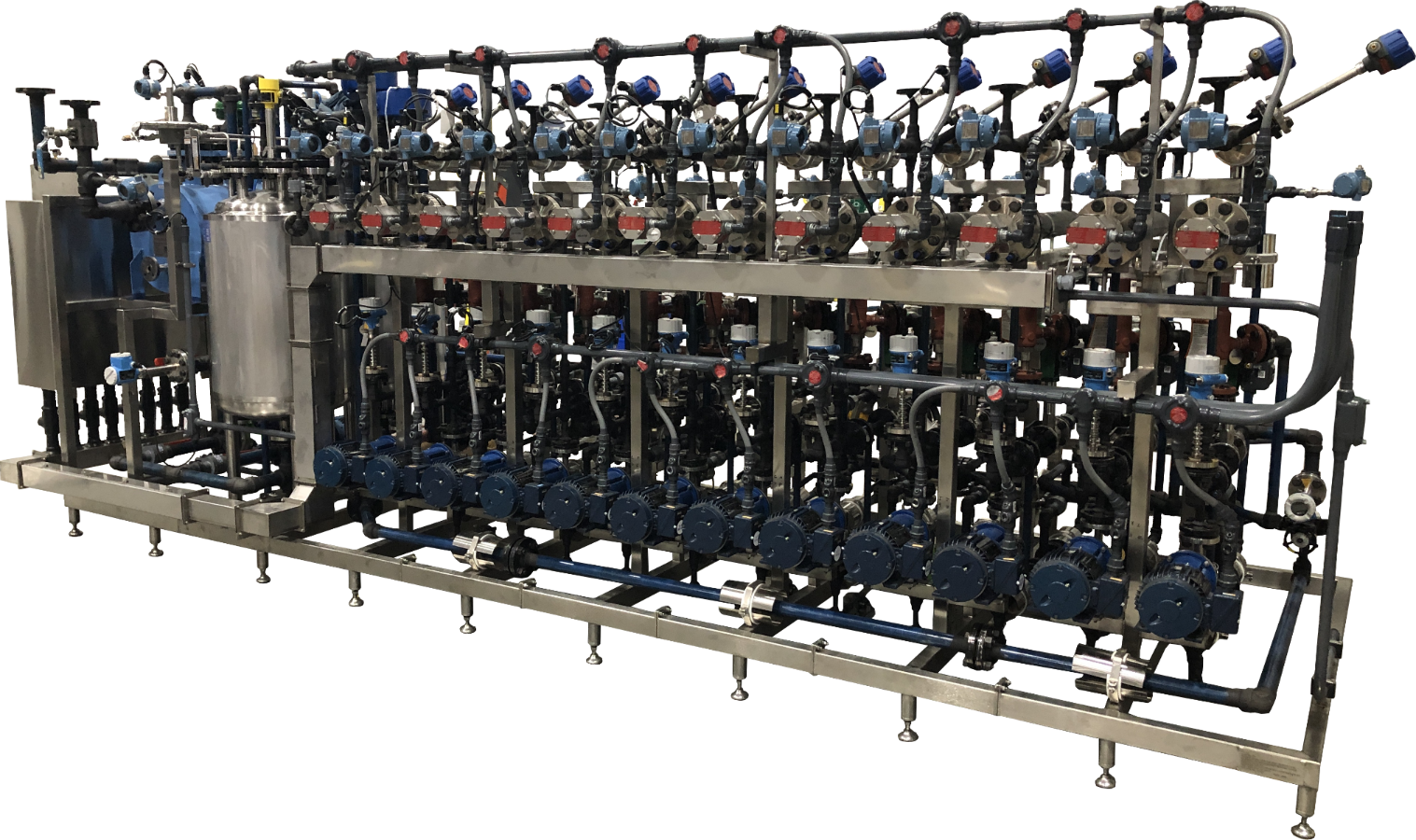Leveraging Machine Learning in DVS Heat Transfer Systems for Smarter Heat Regulation
Advancements in Heat Transfer Equipments: What You Required to Know for Optimum Efficiency
Technologies in Heat transfer systems are changing performance across different industries. Advanced products like graphene and nanofluids promise considerable enhancements in thermal conductivity. The combination of IoT and device learning provides chances for real-time surveillance and improved power performance. The landscape of thermal monitoring is swiftly advancing. Recognizing these developments is crucial for accomplishing ideal system performance and sustainability in the future. What specific developments are forming this makeover?
Arising Materials for Enhanced Heat Transfer

Advanced Heat Exchanger Styles
While typical Heat exchangers have actually offered their purpose in various applications, progressed designs are currently emerging to satisfy the enhancing demands for effectiveness and performance. These cutting-edge layouts, such as plate, shell-and-tube, and finned-tube Heat exchangers, include improved area and boosted circulation patterns to increase thermal transfer prices. Furthermore, compact styles allow for reduced room requirements without jeopardizing effectiveness. Advanced products, such as composites and corrosion-resistant alloys, additionally boost durability and efficiency under severe conditions. Simulation innovations and computational liquid dynamics are significantly used to fine-tune these styles, making sure peak Heat transfer features. As industries look for to decrease energy usage and make the most of outcome, the adoption of innovative Heat exchanger layouts is pivotal in attaining these purposes.
The Function of Nanotechnology in Heat Transfer
Nanotechnology plays a vital function in enhancing thermal conductivity within Heat transfer systems. By controling products at the nanoscale, scientists have achieved significant improvements in energy effectiveness. These developments not just enhance performance however also add to even more sustainable energy remedies.
Improved Thermal Conductivity
Significant developments in thermal conductivity have emerged through the application of nanotechnology, revolutionizing Heat transfer systems across different markets. By integrating nanoparticles right into Heat transfer liquids and products, scientists have accomplished remarkable boosts in thermal conductivity. These nanoparticles, such as carbon nanotubes, graphene, and steel oxides, enhance the Heat transfer buildings due to their high area and one-of-a-kind thermal features. The resulting compounds show boosted performance in applications varying from electronic devices cooling down systems to sustainable power technologies. Moreover, the ability to customize the size, shape, and composition of nanoparticles permits for enhanced thermal management solutions. As a result, nanotechnology continues to play a critical function in the advancement of extra efficient and efficient Heat transfer systems, leading the means for improved industrial applications.
Power Efficiency Improvements

Combination of IoT in Heat Transfer Solutions
The integration of IoT in Heat transfer systems presents the execution of smart sensing units that improve operational performance. These sensing units allow real-time data monitoring, permitting prompt adjustments and optimizations. This technical improvement has the prospective to substantially enhance performance and power administration in Heat transfer applications.
Smart Sensors Execution
As Heat transfer systems progress, the assimilation of wise sensors with the Internet of Points (IoT) has actually emerged as a transformative technique. These sensing units make it possible for real-time tracking of stress, temperature, and circulation prices, enhancing system effectiveness and reliability. By accumulating and sending information, they help with aggressive maintenance, lowering the threat of system failings. Additionally, smart sensors contribute to energy cost savings by refining functional specifications based on environmental conditions. Their capability to analyze patterns and abnormalities allows for educated decision-making, making certain peak efficiency of Heat transfer systems. As markets increasingly adopt this innovation, the application of smart sensors stands to change exactly how Heat transfer systems are taken care of, paving the means for greater sustainability and improved efficiency outcomes.
Real-Time Data Surveillance
Just how can real-time information keeping track of improve the performance of Heat transfer systems? By incorporating Web of Things (IoT) modern technology, Heat transfer systems can take advantage of constant information collection from clever sensors. This real-time monitoring permits prompt analysis of temperature, stress, and circulation rates, making it possible for drivers to recognize ineffectiveness immediately. As a result, changes can be made to optimize performance, reduce energy intake, and extend devices life expectancy. Additionally, predictive upkeep can be executed, lessening unforeseen downtime and expensive repair work. The capability to picture efficiency metrics with dashboards improves decision-making, promoting an aggressive approach to system monitoring. Eventually, real-time information checking not just boosts operational performance but additionally contributes to sustainability objectives within commercial procedures.
Power Efficiency and Sustainability Trends
Power performance and sustainability trends are improving the landscape of Heat transfer systems, driving development and compliance across different industries. Organizations are progressively prioritizing energy-efficient designs to reduce functional expenses and lessen environmental effects. The integration of eco-friendly power sources is becoming extra prevalent, allowing Heat transfer systems to run sustainably while satisfying regulative demands. Additionally, my blog improvements in products and modern technologies promote reduced power consumption and boost overall performance. Lifecycle analyses are likewise getting grip, permitting business to evaluate the ecological effect of Heat transfer systems from production to disposal. This concentrate on sustainability not just supports business obligation yet also placements organizations competitively in a market where customers progressively prefer environment-friendly services. Consequently, energy performance and sustainability remain essential considerations for future growths in Heat transfer technology.
Advancements in Thermal Monitoring Solutions
While the need for effective Heat transfer continues to increase, advancements in thermal monitoring services are emerging to deal with both performance and sustainability challenges. Advanced materials, such as phase change materials and nanofluids, are being established to improve Heat transfer effectiveness - DVS Heat Transfer Systems. These materials improve thermal conductivity and enable better temperature law in different applications. Furthermore, modern technologies like energetic thermal control systems are acquiring traction, enabling real-time changes to handle Heat flow effectively. These systems add to power cost savings and reduce the environmental impact of thermal procedures. Moreover, the combination of IoT in thermal administration promotes tracking and predictive maintenance, making certain enhanced performance and longevity of Heat transfer systems. In general, these innovations represent substantial strides toward more lasting thermal monitoring techniques
Future Instructions in Heat Transfer Innovation
Arising improvements in thermal monitoring services indicate an encouraging future for Heat transfer innovation. Scientists are progressively concentrating on creating materials with remarkable thermal conductivity and boosted power performance. Technologies such as nanofluids, which include suspended nanoparticles, use significant improvements in Heat transfer efficiency. Furthermore, the integration of smart products that adapt to varying temperature level conditions is obtaining grip, enabling more responsive and efficient systems. The increase of additive production methods is likewise enabling the design of complex Heat exchanger geometries that maximize liquid flow. The implementation of device understanding formulas is anticipated to reinvent the optimization of Heat transfer systems, facilitating anticipating maintenance and performance enhancement. Collectively, these advancements are poised to change the landscape of Heat transfer technologies in numerous sectors.

Regularly Asked Questions

How Do I Select the Right Heat Transfer System for My Application?
Picking the appropriate Heat transfer system includes reviewing application requirements, including temperature level varieties, fluid properties, and performance requirements. Evaluating system kinds, upkeep considerations, and cost-effectiveness likewise plays an important duty in making an educated choice.
What Are the Maintenance Needs for Advanced Heat Exchangers?
Maintenance requirements for innovative Heat exchangers normally consist of normal assessments, monitoring for other leakages, cleaning of surfaces, and guaranteeing perfect flow rates. Following supplier guidelines assurances effective operation and prolongs the equipment's life expectancy.
How Do Ecological Aspects Affect Heat Transfer Efficiency?
Environmental elements substantially affect Heat transfer effectiveness. Variants in air flow, temperature, and humidity influence thermal conductivity and convective Heat transfer, inevitably affecting system performance and demanding factor to consider during the layout and procedure of Heat transfer systems.
What Safety And Security Specifications Put On Heat Transfer Solutions?
Security standards for Heat transfer systems normally consist of guidelines from companies such as ASME and ASTM. DVS Heat Transfer Systems. These criteria address materials, layout, and functional techniques to ensure reliability, effectiveness, and protection against risks in numerous applications
Just How Can I Troubleshoot Typical Heat Transfer System Issues?
Repairing common Heat transfer system problems entails looking for leakages, ensuring proper liquid circulation, evaluating insulation stability, and validating temperature differentials. Determining these aspects can aid preserve system performance and prevent more problems.
Nanotechnology plays a crucial function in improving thermal conductivity within Heat transfer systems. Significant improvements in thermal conductivity have actually arised with the application of nanotechnology, reinventing Heat transfer systems across different industries. Improvements in thermal conductivity with nanotechnology have led the way for exceptional renovations in energy effectiveness within Heat important source transfer systems. Power performance and sustainability fads are improving the landscape of Heat transfer systems, driving innovation and compliance throughout different markets. The combination of IoT in thermal administration helps with surveillance and anticipating upkeep, making certain optimized efficiency and durability of Heat transfer systems.